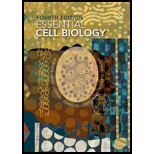
Concept explainers
To determine: The significance in the arrangement of the given sequence (Leu-Lys-Val-Asp-Ile-Ser-Leu-Arg-Leu-Lys-Ile-Arg-Phe-Glu) when incorporated in beta sheets.
Introduction:
Beta sheets are the secondary structure of proteins. There are two types of beta sheets; the parallel and anti-parallel. When two stands of the beta sheets run in similar direction, it is termed as parallel beta strands, whereas when the both strands run in reverse direction, it is termed as anti-parallel beta sheets. In the anti-parallel sheets, amino terminal of one amino acid forms bond with the carboxyl terminal of the nearby strand, and carboxyl terminal of the same amino acid forms bond with the amino terminal of the other nearby strand. Whereas in the parallel sheet, the amino terminal of amino acid in one stand forms a bond with the amino terminal of the nearby strand and the carboxyl end forms hydrogen with the carboxyl end of the nearby strand.
To predict: The arrangement of beta sheets in a protein.
Introduction:
Beta sheets are the secondary structure of proteins. There are two types of beta sheets; the parallel and anti-parallel. When two stands of the beta sheets run in similar direction, it is termed as parallel beta strands, whereas when the both strands run in reverse direction, it is termed as anti-parallel beta sheets. In the anti-parallel sheets, amino terminal of one amino acid forms bond with the carboxyl terminal of the nearby strand, and carboxyl terminal of the same amino acid forms bond with the amino terminal of the other nearby strand. Whereas in the parallel sheet, the amino terminal of amino acid in one stand forms a bond with the amino terminal of the nearby strand and the carboxyl end forms hydrogen with the carboxyl end of the nearby strand.
Want to see the full answer?
Check out a sample textbook solution
Chapter 4 Solutions
Essential Cell Biology
 Human Anatomy & Physiology (11th Edition)BiologyISBN:9780134580999Author:Elaine N. Marieb, Katja N. HoehnPublisher:PEARSON
Human Anatomy & Physiology (11th Edition)BiologyISBN:9780134580999Author:Elaine N. Marieb, Katja N. HoehnPublisher:PEARSON Biology 2eBiologyISBN:9781947172517Author:Matthew Douglas, Jung Choi, Mary Ann ClarkPublisher:OpenStax
Biology 2eBiologyISBN:9781947172517Author:Matthew Douglas, Jung Choi, Mary Ann ClarkPublisher:OpenStax Anatomy & PhysiologyBiologyISBN:9781259398629Author:McKinley, Michael P., O'loughlin, Valerie Dean, Bidle, Theresa StouterPublisher:Mcgraw Hill Education,
Anatomy & PhysiologyBiologyISBN:9781259398629Author:McKinley, Michael P., O'loughlin, Valerie Dean, Bidle, Theresa StouterPublisher:Mcgraw Hill Education, Molecular Biology of the Cell (Sixth Edition)BiologyISBN:9780815344322Author:Bruce Alberts, Alexander D. Johnson, Julian Lewis, David Morgan, Martin Raff, Keith Roberts, Peter WalterPublisher:W. W. Norton & Company
Molecular Biology of the Cell (Sixth Edition)BiologyISBN:9780815344322Author:Bruce Alberts, Alexander D. Johnson, Julian Lewis, David Morgan, Martin Raff, Keith Roberts, Peter WalterPublisher:W. W. Norton & Company Laboratory Manual For Human Anatomy & PhysiologyBiologyISBN:9781260159363Author:Martin, Terry R., Prentice-craver, CynthiaPublisher:McGraw-Hill Publishing Co.
Laboratory Manual For Human Anatomy & PhysiologyBiologyISBN:9781260159363Author:Martin, Terry R., Prentice-craver, CynthiaPublisher:McGraw-Hill Publishing Co. Inquiry Into Life (16th Edition)BiologyISBN:9781260231700Author:Sylvia S. Mader, Michael WindelspechtPublisher:McGraw Hill Education
Inquiry Into Life (16th Edition)BiologyISBN:9781260231700Author:Sylvia S. Mader, Michael WindelspechtPublisher:McGraw Hill Education





